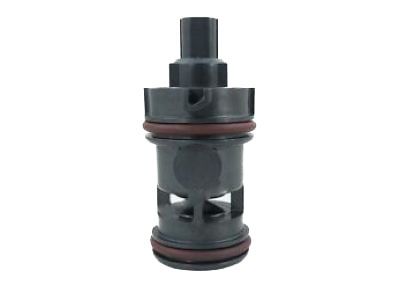×
- Live Chat
- 1-888-984-2011

My Garage
My Account
Cart
Genuine Honda Odyssey Canister Purge Valve
Vapor Canister Purge Valve EVAP- Select Vehicle by Model
- Select Vehicle by VIN
Select Vehicle by Model
orMake
Model
Year
Select Vehicle by VIN
For the most accurate results, select vehicle by your VIN (Vehicle Identification Number).
15 Canister Purge Valves found
Honda Odyssey Valve Assembly, Purge
Part Number: 36162-5G0-A01$29.95 MSRP: $42.30You Save: $12.35 (30%)Honda Odyssey Valve Assembly, Purge Control Solenoid
Part Number: 36162-RMX-A01$150.50 MSRP: $214.38You Save: $63.88 (30%)Honda Odyssey Valve, Purge Control Solenoid
Part Number: 36162-RJA-A01$74.29 MSRP: $104.93You Save: $30.64 (30%)Honda Odyssey Valve, Canister Vent Shut (Made In Mexico)
Part Number: 17310-S0X-A02$75.97 MSRP: $107.30You Save: $31.33 (30%)Honda Odyssey Valve, Canister Vent Shut
Part Number: 17310-TA0-A01$60.81 MSRP: $85.88You Save: $25.07 (30%)Honda Odyssey Valve Assembly, Canister Vent Shut
Part Number: 17311-SWA-A01$209.06 MSRP: $297.80You Save: $88.74 (30%)Honda Odyssey Valve, Purge Control Solenoid
Part Number: 36162-PGK-A02$65.34 MSRP: $92.28You Save: $26.94 (30%)Honda Odyssey Valve, Canister Vent Shut
Part Number: 17310-SV4-L32$252.77 MSRP: $360.07You Save: $107.30 (30%)Honda Odyssey Valve Assembly, Purge Control Solenoid
Part Number: 36160-P0A-A01$277.28 MSRP: $394.99You Save: $117.71 (30%)Honda Odyssey Valve Assembly, Purge Control Solenoid
Part Number: 36160-P8F-A01$70.53 MSRP: $99.62You Save: $29.09 (30%)Honda Odyssey Valve, Canister Vent Shut (Made In Mexico)
Part Number: 17310-S84-L31$91.21 MSRP: $128.83You Save: $37.62 (30%)
Honda Odyssey Canister Purge Valve
In search of affordable OEM Honda Odyssey Canister Purge Valve? Consider browsing through our extensive inventory of genuine Honda Odyssey Canister Purge Valve. Not only do we provide market-leading prices and a manufacturer's warranty, but we also pride ourselves on exceptional customer service and swift delivery.
Honda Odyssey Canister Purge Valve Parts Questions & Experts Answers
- Q: What is the purpose and function of the Evaporative Emissions Control (EVAP) system,Canister Purge Valve, Fuel Pressure Sensor and Vapor Canister on Honda Odyssey?A: The Evaporative Emissions Control (EVAP) system is developed in order to avoid fuel system vapors which contain hydrocarbons which have not been burned from ever escaping into the atmosphere. On warm days, vapors at fuel tank raise pressure, and are sent through the fuel vapor vent valve and fuel vapor control valve into EVAP canister for several days until the car is next used. During certain conditions only the canister purge valve opens and lets the vapors be drawn into the intake manifold which comes together with the new air and is then burning the vapors in the combustion chambers. The EVAP canister is installed below the automobile in front of the fuel tank and also is made from activated carbon; it is also non serviceable. These are the canister filter, canister vent shut valve, two-way valve, by-pass solenoid valve and the fuel tank pressure sensor. The canister filter ensure that the dirty air is not gets into the system, and the canister vent shut valve ensures that new air gets into the canister during a purging exercise. The fuel tank pressure sensor checks on the pressure and transmits it to the PCM, the PCM also controls the two-way valve with a view of checking on the flow of the vapor and not allow excess vacuum. The use of the bypass solenoid valve is during leak checks to regulate the air supply to the system. Some of the signs of a faulty EVAP are fuel smell, rough idle, and cold drive, that are resulting from malfunctioning valves or broken hoses. The most effective way to identify when fuel vapour pressure is high is by removing the gas cap in a bid to listen for pressure reducing sounds. Replacement of individual components requires the removal of electrical connectors and vacuum connections, dismantling of the mounting bolts and making certain that the new components come with new O-rings.
Related Honda Odyssey Parts
Browse by Year
2024 Canister Purge Valve 2023 Canister Purge Valve 2022 Canister Purge Valve 2021 Canister Purge Valve 2020 Canister Purge Valve 2019 Canister Purge Valve 2018 Canister Purge Valve 2017 Canister Purge Valve 2016 Canister Purge Valve 2015 Canister Purge Valve 2014 Canister Purge Valve 2013 Canister Purge Valve 2012 Canister Purge Valve 2011 Canister Purge Valve 2010 Canister Purge Valve 2009 Canister Purge Valve 2008 Canister Purge Valve 2007 Canister Purge Valve 2006 Canister Purge Valve 2005 Canister Purge Valve 2004 Canister Purge Valve 2003 Canister Purge Valve 2002 Canister Purge Valve 2001 Canister Purge Valve 2000 Canister Purge Valve 1999 Canister Purge Valve 1998 Canister Purge Valve 1997 Canister Purge Valve 1996 Canister Purge Valve 1995 Canister Purge Valve

































